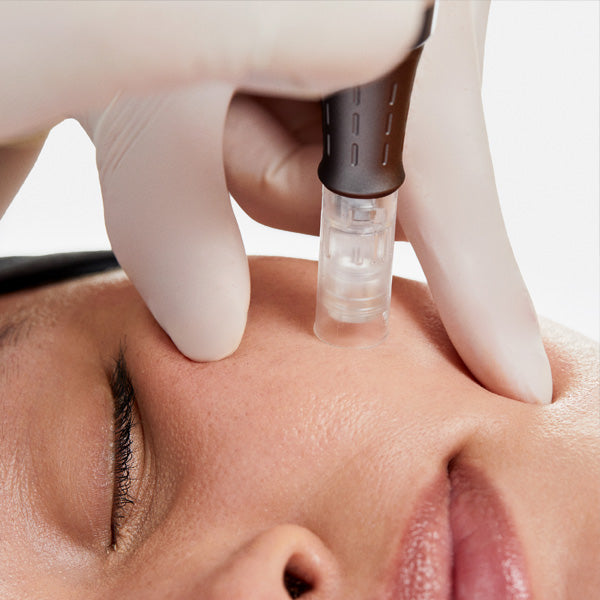
by laraibnaeem2005 | Sep 15, 2025 | Health
Uneven skin tone, pigmentation, and dark spots are common concerns that affect many individuals regardless of age or skin type. These issues often arise due to sun damage, hormonal changes, or acne scars, leaving behind visible marks that may be difficult to treat with creams alone. This is where Dermapen for hyperpigmentation and dark spots becomes an effective option. By stimulating natural healing and boosting collagen production, it offers noticeable improvement in overall skin tone.
What Is Treatment And How It Works?
Dermapen Treatment in Dubai(علاج ديرمابن في دبي) is a minimally invasive procedure that uses fine needles to create controlled micro-injuries in the skin. These microchannels trigger the body’s healing response, encouraging new collagen and elastin production. When targeting areas of hyperpigmentation and dark spots, this process helps break down uneven pigmentation and allows the skin to repair itself with healthier, more uniform cells. Over time, the treatment helps fade discoloration and enhances radiance.
Importance Of Treatment:
The importance of Dermapen for pigmentation lies in its ability to address discoloration at a deeper level. While topical products often treat only the skin’s surface, microneedling penetrates deeper layers, improving not only the appearance of dark spots but also overall skin texture. This makes it beneficial for those dealing with acne scars, melasma, age spots, or sun-induced pigmentation. For individuals seeking a non-surgical method with gradual yet long-lasting effects, Dermapen stands out as a practical solution.
Types Of Treatment:
There are various ways Dermapen microneedling for dark spots can be customized depending on skin needs:
-
Standard Dermapen sessions: Focus on stimulating collagen and improving pigmentation naturally.
-
Dermapen with serums: Active ingredients such as brightening agents may be infused into the skin for enhanced results.
-
Combination approaches: Dermapen can also be paired with other treatments to maximize skin lightening and evening out tone.
Each type is designed to gradually reduce pigmentation while maintaining the safety of the skin barrier.
Preparation And Aftercare:
To achieve the best outcomes from Dermapen treatment for hyperpigmentation, preparation and aftercare are essential. Before the session:
-
Avoid direct sunlight and tanning products.
-
Discontinue strong exfoliants, acids, or retinoids for a few days.
-
Keep skin hydrated and clean.
After the procedure:
-
Apply soothing creams or hydrating serums as recommended.
-
Always use sunscreen to protect against UV damage.
-
Avoid makeup, heavy workouts, and saunas for 24–48 hours.
-
Keep skin moisturized to support the healing process.
Following these guidelines enhances the results and reduces the risk of irritation or side effects.
Ideal Candidate:
The ideal candidate for Dermapen for dark spots is someone who experiences uneven skin tone caused by acne scars, sun exposure, or aging. It is suitable for a wide range of skin types and tones. However, people with active skin infections, uncontrolled acne, or severe medical skin conditions may not be suitable. Younger individuals with early signs of pigmentation as well as older individuals with long-term sun damage can both benefit from the treatment.
How To Choose A Right Clinic?
Selecting the right place for Dermapen microneedling plays a crucial role in achieving safe and noticeable results. Look for facilities that maintain high hygiene standards, use advanced equipment, and have experienced professionals. Reading reviews, checking before-and-after photos, and ensuring proper consultation before treatment can help in making an informed choice. A trusted clinic ensures safety and maximizes the benefits of hyperpigmentation reduction treatments.
Risks:
Though generally safe, there are some possible Dermapen Treatment(علاج ديرمابن) side effects to consider. Temporary redness, swelling, or sensitivity may occur in the treated area, typically subsiding within 24–48 hours. Rare complications may include bruising or infection if aftercare instructions are not followed. Choosing a qualified provider and adhering to guidelines minimizes these risks, making it a reliable solution for pigmentation concerns.
Benefits:
The benefits of Dermapen microneedling for hyperpigmentation and dark spots make it a preferred choice among many seeking clearer skin:
-
Reduction of pigmentation, sun spots, and acne marks
-
Improved skin texture and smoothness
-
Stimulation of collagen for long-term skin health
-
Even skin tone with a brighter complexion
-
Minimal downtime compared to invasive procedures
-
Safe for different skin types and tones
With repeated sessions, patients notice visible fading of dark patches, giving the skin a more youthful and uniform look.
Faqs:
Can Dermapen completely remove dark spots?
It may not erase them entirely but significantly reduces their visibility.
How many sessions are needed for hyperpigmentation?
Most people require 4–6 sessions for optimal results.
Is Dermapen safe for darker skin tones?
Yes, it is safe but settings may be adjusted for individual needs.
Does it work on melasma?
It can improve melasma, though results may vary and require consistent care.
Is there downtime after treatment?
Mild redness may occur, usually resolving within 1–2 days.
Conclusion:
For those asking, can Dermapen reduce hyperpigmentation and dark spots, the answer is yes—it is an effective solution that stimulates the skin’s natural healing to fade discoloration. By targeting deeper layers and boosting collagen, it delivers smoother, brighter, and more even-toned skin over time. With proper preparation, aftercare, and multiple sessions, Dermapen can significantly improve pigmentation issues. For individuals looking for a non-invasive yet powerful treatment, Dermapen for hyperpigmentation stands as one of the most reliable choices.
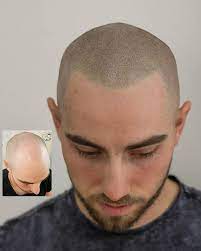
by laraibnaeem2005 | Sep 12, 2025 | Health
Many people dealing with thinning hair or baldness often ask, how realistic does SMP look up close? Scalp Micropigmentation (SMP) has gained attention as a non-surgical solution that replicates the appearance of natural hair follicles. By applying tiny pigment deposits into the scalp, this treatment creates the illusion of a fuller head of hair or a clean-shaven style. The level of realism depends on several factors, including technique, pigment quality, and aftercare.
What Is Scalp Micropigmentation And How It Works?
Scalp Micropigmentation in Dubai(صبغ فروة الرأس المجهري في دبي) is a cosmetic procedure that uses micro-needles to deposit natural pigments into the scalp. Unlike tattoos, these pigments are designed to mimic real hair follicles rather than decorative patterns. Skilled practitioners carefully layer shades to achieve depth, blending seamlessly with existing hair. This makes SMP look remarkably authentic even at a close distance, giving the scalp a natural density effect.
Importance Of Scalp Micropigmentation:
For individuals facing pattern baldness, alopecia, or thinning hair, SMP offers a powerful way to restore confidence. It provides immediate visual improvement without the downtime of surgical procedures. Beyond appearance, the treatment reduces the emotional impact of hair loss by giving the scalp a uniform and youthful look. The importance of scalp micropigmentation lies not only in aesthetics but also in improving self-esteem and social interactions.
Types Of Scalp Micropigmentation Treatments:
SMP is not one-size-fits-all. There are different types of treatments available:
-
Full scalp coverage: for complete baldness, recreating a shaved head style
-
Density enhancement: for thinning areas, adding the look of more volume
-
Scar camouflage: for hiding hair transplant or injury scars
-
Hairline reconstruction: creating a natural-looking frontal hairline
Each type is tailored to the individual’s needs, ensuring that the final result looks natural both from afar and up close.
Preparation And Aftercare For SMP:
To ensure the treatment looks as realistic as possible, preparation and aftercare are crucial. Before the procedure, clients are advised to avoid alcohol, caffeine, and heavy sun exposure. After the sessions, proper aftercare helps the pigments settle naturally. Key steps include:
-
Avoid direct sun exposure for the first few days
-
Keep the scalp clean and moisturized
-
Avoid swimming, saunas, or intense exercise initially
-
Follow professional advice for touch-ups if necessary
Good preparation and aftercare significantly improve the final results, keeping SMP looking realistic and long-lasting.
Who Is An Ideal Candidate For SMP?
Not everyone is suited for scalp micropigmentation, but many benefit from it. Ideal candidates include:
-
Men and women with pattern baldness
-
People with alopecia patches
-
Those who want scar camouflage
-
Individuals with thinning hair seeking density
-
Anyone looking for a low-maintenance solution to hair loss
Since the treatment does not promote new hair growth but only simulates follicles, it is most effective for individuals who prefer a shaved or closely cropped look.
How To Choose The Right SMP Provider?
Selecting the right professional ensures that SMP looks realistic even at close range. Factors to consider include:
-
Checking before-and-after photos of past clients
-
Reviewing pigment quality and equipment used
-
Ensuring proper hygiene and sterile practices
-
Looking for specialized training and experience
-
Reading client feedback for authenticity
Choosing the right provider is a critical step in achieving a natural and convincing appearance.
Risks And Considerations Of SMP:
Although scalp micropigmentation is safe when performed by trained professionals, there are risks to be aware of. Some include:
-
Temporary redness or swelling after sessions
-
Possible allergic reaction to pigments
-
Uneven results if performed incorrectly
-
Pigment fading over time requiring touch-ups
Being aware of these risks helps set realistic expectations about the outcome.
Benefits Of Scalp Micropigmentation:
The benefits of Scalp Micropigmentation(صبغ فروة الرأس المجهري) go beyond its cosmetic appeal. Some key advantages are:
-
Instant improvement in scalp appearance
-
Non-surgical and minimally invasive
-
No long recovery period
-
Works for both men and women
-
Long-lasting results with proper care
These benefits make SMP one of the most practical solutions for addressing hair loss without the complexity of surgery.
Common FAQs About SMP:
-
Does scalp micropigmentation hurt?
-
Most people describe the sensation as mild discomfort rather than pain.
-
How long does SMP last?
-
With proper care, results can last several years before needing a touch-up.
-
Will people notice it’s not real hair?
-
When done professionally, SMP looks very realistic even up close.
-
Can SMP be customized?
-
Yes, the density, hairline shape, and shading can all be tailored to your preferences.
-
Is SMP permanent?
-
It is considered semi-permanent, with gradual fading over time.
Conclusion On Realism Of SMP:
So, how realistic does SMP look up close? When performed by an experienced professional, SMP blends seamlessly with existing hair or creates the illusion of a freshly shaved scalp. The pigments are carefully matched to natural tones, ensuring an authentic and natural finish. With proper preparation, aftercare, and touch-ups, SMP provides one of the most convincing solutions to hair loss. This makes scalp micropigmentation an effective way to restore confidence while maintaining a realistic look from every angle.
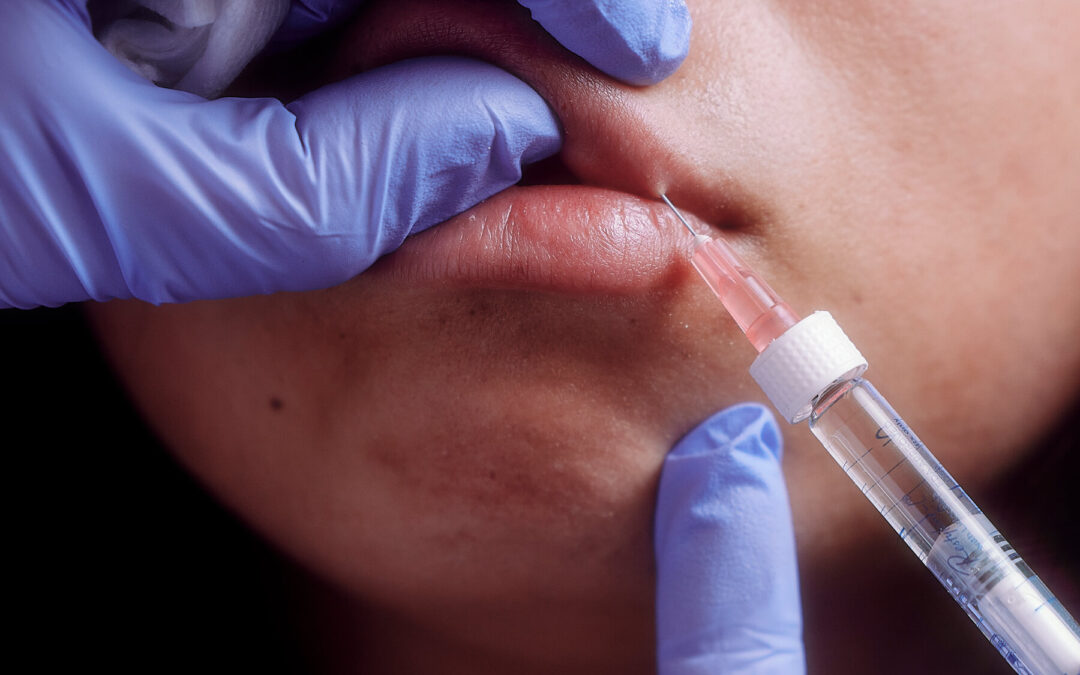
by laraibnaeem2005 | Sep 11, 2025 | Health
Lip filler injections have become a leading cosmetic treatment for achieving plump, well-defined, and naturally hydrated lips. Many individuals seek this procedure to enhance lip shape, restore volume, and boost confidence. Understanding lip filler techniques, including hyaluronic acid and other options, how they work, preparation, aftercare, types, ideal candidates, risks, benefits, and frequently asked questions ensures safe and satisfying results.
What Is Treatment and How It Works?
Lip filler injections in Dubai(حقن فيلر الشفاه في دبي) involve the careful placement of a filler into targeted areas of the lips to restore volume, shape, and hydration. Hyaluronic acid, the most popular choice, attracts water molecules and smooths contours for a natural, plump look. The procedure is minimally invasive, typically lasting 15–30 minutes, and offers immediate results. By correcting thinning, asymmetry, or fine lines, lip fillers enhance overall facial balance and improve aesthetic appeal.
Importance of Treatment
The lips are central to facial aesthetics, expression, and self-confidence. Factors such as aging, genetics, and environmental exposure can result in thinning lips, uneven shape, or fine lines around the mouth. Lip filler injections restore volume, improve symmetry, and create a youthful, hydrated appearance. Recognizing the significance of these treatments helps individuals make informed choices and achieve results that enhance self-esteem and social confidence.
Types of Treatment:
Various lip filler techniques cater to specific aesthetic goals:
-
Hyaluronic Acid Fillers: Most commonly used for soft, natural, and reversible results.
-
Collagen-Based Fillers: Less frequently used, with a small risk of allergic reactions.
-
Semi-Permanent Fillers: Longer-lasting solutions requiring precise application to maintain natural contours.
-
Lip Enhancement Techniques: Include microcannula injections, layering methods, and volumizing strategies to create balance and definition.
Choosing the right technique ensures lips appear naturally plump, symmetrical, and hydrated while minimizing the risk of complications.
Preparation and Aftercare:
Proper preparation and aftercare are essential for safe and effective lip filler injections and for maintaining long-lasting results.
Preparation
-
Avoid alcohol, blood-thinning medications, and supplements prior to treatment to reduce bruising.
-
Communicate desired lip shape, volume, and enhancement goals clearly.
-
Ensure good overall health before the procedure.
Aftercare
-
Avoid touching or massaging the lips for 24–48 hours.
-
Apply ice packs to minimize swelling and discomfort.
-
Refrain from strenuous activity or heat exposure immediately after treatment.
-
Stay hydrated to support filler longevity and a natural hydrated look.
-
Contact a professional if unusual swelling, bruising, or irritation occurs.
Following proper preparation and aftercare ensures that the filler settles evenly, enhancing both volume and natural lip contours.
Ideal Candidate:
The ideal candidate for lip filler injections seeks to improve lip volume, shape, symmetry, or hydration. Candidates should be in good overall health and have realistic expectations. Both men and women of varying ages can benefit. Individuals with allergies to filler components, active infections, or certain medical conditions should consult a professional prior to treatment. Being an ideal candidate ensures safe, natural-looking, and long-lasting results.
How to Choose a Right Clinic?
Selecting a reputable clinic or professional is vital for safe and effective Lip filler injections(حقن فيلر الشفاه). Consider:
-
Verified experience and positive client reviews.
-
Clean, professional, and hygienic environment.
-
Clear communication about procedure steps, filler types, potential risks, and aftercare.
-
Consultation to discuss goals, evaluate lip structure, and set realistic expectations.
Choosing the right clinic ensures natural, balanced, and confidence-boosting results while minimizing potential complications.
Risks and Benefits:
Understanding the risks and benefits allows individuals to make informed decisions regarding lip filler injections.
Benefits
-
Immediate improvement in lip volume, hydration, and definition.
-
Enhanced facial symmetry and youthful appearance.
-
Smooth, plump, and naturally contoured lips.
-
Non-surgical procedure with minimal downtime.
-
Customizable results tailored to personal aesthetic goals.
Risks
-
Temporary swelling, redness, or bruising.
-
Rare complications such as infection or uneven filler distribution.
-
Possible allergic reactions depending on filler type.
Proper preparation, professional administration, and adherence to aftercare reduce risks while maximizing benefits, leaving lips plump, hydrated, and naturally defined.
FAQs:
What are the most popular lip filler techniques?
Hyaluronic acid injections, microcannula application, and layering methods are widely used for natural results.
Do lip fillers hurt?
Most contain a numbing agent to reduce discomfort.
How long do results last?
Typically 6–12 months depending on filler type and individual metabolism.
Can fillers correct uneven lips?
Yes, precise placement improves symmetry and balance.
Is there downtime?
Recovery is minimal, with mild swelling or bruising for a few days.
Conclusion:
Lip filler injections using techniques like hyaluronic acid, microcannula, and layering methods offer a safe and effective way to achieve fuller, well-shaped, and youthful-looking lips. By restoring volume, smoothing fine lines, and improving symmetry, lip filler injections deliver immediate results that enhance both appearance and confidence. Understanding the techniques, preparation, aftercare, ideal candidates, risks, and benefits ensures informed decisions and satisfying outcomes. When performed professionally, lip fillers provide natural, balanced, and long-lasting results, leaving lips plump, hydrated, and rejuvenated.
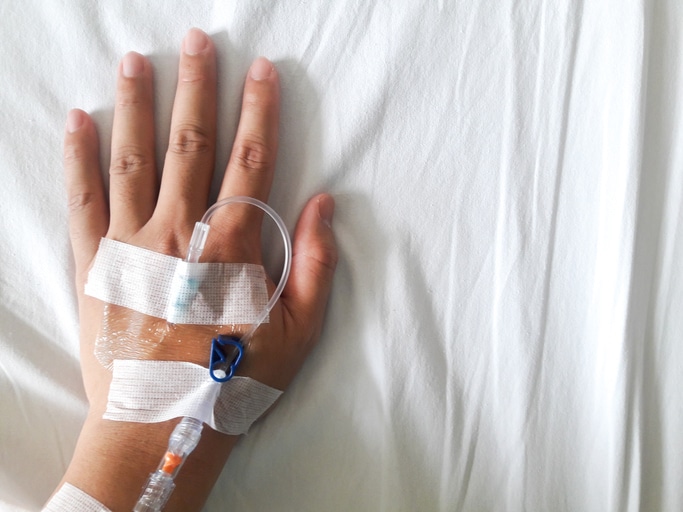
by laraibnaeem2005 | Sep 10, 2025 | Health
Many people are curious about what to expect during your first intravenous drip as this wellness therapy gains popularity worldwide. Whether it is for hydration, immunity, energy, or recovery, IV drips deliver essential nutrients directly into the bloodstream for maximum absorption. If you are preparing for your first session, it is natural to wonder how the procedure works, whether it is painful, and what benefits you might experience afterward. By understanding the process, risks, and aftercare, you can feel more confident and ready to take advantage of this innovative treatment.
What Is Treatment And How It Works?
Intravenous drip in Dubai(التنقيط الوريدي في دبي) therapy is a method of infusing vitamins, minerals, antioxidants, and fluids directly into the vein. Unlike oral supplements, which must pass through the digestive system, IV drips ensure that nutrients enter the bloodstream immediately, providing quick and effective results. During your first session, a small needle is inserted into your vein, and a drip bag delivers the customized formula over 30 to 60 minutes. This bypasses absorption barriers and allows your body to receive nutrients at full strength. The process is usually relaxing, with many people spending the time reading, resting, or listening to music.
Importance Of Treatment:
The importance of intravenous drip therapy lies in its ability to quickly replenish what the body lacks. Modern lifestyles often expose individuals to stress, poor nutrition, and environmental toxins, which can compromise wellness. IV drips deliver hydration and nutrients that help restore balance, boost immunity, and improve energy. For those recovering from illness, fatigue, or long travel, this therapy provides a direct and efficient solution. Many people choose this option because it works faster than oral supplements and offers targeted support for specific health goals.
Types Of Treatment:
There are several types of intravenous drips available today, each tailored for different needs. Some common options include:
-
Hydration Drips: Restore fluid balance, especially after exercise or travel.
-
Immunity Drips: Contain vitamins like C and zinc to strengthen defenses.
-
Energy Drips: Rich in B-complex vitamins to combat fatigue.
-
Detox Drips: Often include glutathione to remove toxins and improve skin clarity.
-
Recovery Drips: Designed for athletes or individuals recovering from illness.
These variations allow you to select the formula that matches your wellness goals, ensuring a personalized experience for your first session.
Preparation And Aftercare:
Before attending your first intravenous drip, it helps to drink water and have a light meal to prevent dizziness. Comfortable clothing with loose sleeves makes the process easier. During the session, you may feel a quick pinch from the needle insertion, but discomfort is usually minimal. After the infusion, it is recommended to continue hydrating and resting if needed. Some people notice an immediate boost in energy, while others experience gradual improvements in the following days. Regular sessions may provide longer-lasting results depending on your body’s needs.
Ideal Candidate:
Intravenous drip therapy can benefit many people, but it is especially suitable for:
-
Those experiencing chronic fatigue or low energy
-
Individuals recovering from colds, flu, or dehydration
-
Athletes seeking faster recovery after intense workouts
-
Frequent travelers dealing with jet lag
-
People with nutrient absorption issues
However, it may not be ideal for everyone. Those with certain health conditions should consult a professional before undergoing treatment to ensure safety and effectiveness.
How To Choose A Right Clinic?
Choosing the right place for your first Intravenous drip therapy(التنقيط الوريدي) session is crucial. Look for a facility that maintains high hygiene standards and uses certified nutrient formulas. Experienced staff should explain the process, answer questions, and ensure your comfort throughout the session. Transparency about the ingredients in each drip helps you understand exactly what your body will receive. Reviews and recommendations can also provide insight into the quality of service, making it easier to find a trustworthy option for your first experience.
Risks:
While intravenous drips are generally safe, there are some risks to consider:
-
Minor bruising or discomfort at the needle site
-
Temporary lightheadedness or fatigue after treatment
-
Rare allergic reactions to certain nutrients
-
Risk of infection if not performed in a sterile environment
Most side effects are mild and short-lived, and choosing a reputable provider minimizes potential risks.
Benefits:
The benefits of intravenous drip therapy are among the main reasons people try it for the first time. Some advantages include:
-
Faster nutrient absorption compared to oral supplements
-
Immediate hydration and revitalization
-
Enhanced immune support and illness recovery
-
Reduction in fatigue and stress levels
-
Improved skin clarity and overall wellness
These benefits can make a noticeable difference, especially for individuals who struggle with energy or nutrient deficiencies.
Faqs:
Is intravenous drip therapy painful?
Most people only feel a slight pinch during insertion.
How long does a session last?
Sessions usually take 30 to 60 minutes.
When will I notice results?
Some feel energized immediately, while others notice gradual improvement.
Can I eat before treatment?
Yes, a light meal helps prevent dizziness.
Do I need regular sessions?
Frequency depends on your health goals and lifestyle.
Conclusion:
If you are preparing for what to expect during your first intravenous drip, the process is generally comfortable, quick, and highly effective. By delivering nutrients directly into the bloodstream, this therapy ensures maximum absorption and immediate results. From boosting immunity to improving energy levels, intravenous drips offer a wide range of benefits that support overall wellness. While some mild risks exist, careful preparation and choosing a trusted clinic can provide a safe and rewarding first experience. With the right approach, your first IV drip session can set the foundation for better health and vitality.
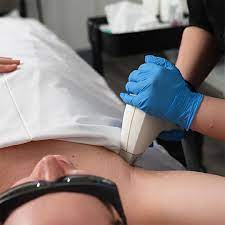
by laraibnaeem2005 | Sep 8, 2025 | Health
Many people search for the chest and back laser hair removal price list when looking for effective and lasting grooming solutions. These large areas are often difficult to maintain with shaving, waxing, or other temporary methods. Laser hair removal offers smoothness, comfort, and a more permanent reduction of unwanted hair. This guide covers how the treatment works, its importance, preparation, risks, benefits, and answers to common questions people ask before booking sessions.
What Is Treatment And How It Works?
Laser Hair Removal in Dubai Price List(إزالة الشعر بالليزر في دبي قائمة الأسعار) for the chest and back uses focused light energy to target hair follicles at the root. The laser’s energy is absorbed by the pigment in the hair, disabling the follicle and slowing down future growth. Over multiple sessions, hair growth is reduced significantly, leaving the skin smoother. For those asking how does chest and back laser hair removal work, the process is safe, precise, and designed to cover larger areas more efficiently than traditional methods.
Importance Of Treatment:
Managing hair on the chest and back can be time-consuming and often uncomfortable. Shaving leads to irritation and ingrown hairs, while waxing can be painful and temporary. The importance of laser hair removal lies in its long-term effectiveness and convenience. People who want to know why chest and back laser hair removal is important will find that it not only improves personal comfort but also enhances appearance and confidence, especially in social and professional settings.
Types Of Treatment:
Chest and back hair removal treatments can be tailored to individual needs. Options include:
-
Full chest laser hair removal: targets the entire chest area.
-
Upper chest laser hair removal: focuses on the upper section near the shoulders.
-
Full back laser hair removal: covers the back from shoulders to waist.
-
Upper or lower back laser hair removal: treats only a specific portion depending on preference.
For those comparing types of chest and back laser hair removal, choosing the right option depends on how much coverage is desired.
Preparation And Aftercare:
Proper preparation and aftercare ensure the treatment is effective and comfortable. Before treatment:
-
Shave the chest or back area 24 hours before your appointment.
-
Avoid tanning or direct sun exposure for at least two weeks.
-
Do not wax or pluck, as follicles must remain intact.
After treatment, you should:
-
Apply soothing lotions or aloe vera to reduce redness.
-
Avoid hot showers, gyms, or swimming for at least 24 hours.
-
Use sunscreen to protect treated areas from UV exposure.
Those wondering how to prepare for chest and back laser hair removal will benefit from following these steps for optimal results.
Ideal Candidate:
Laser hair removal for the chest and back is ideal for both men and women who want to reduce dense or unwanted hair growth in these larger areas. The best candidates are those with realistic expectations and who are seeking long-term hair reduction rather than short-term fixes. Many ask who is the ideal candidate for chest and back laser hair removal, and the answer is anyone looking for a more permanent solution to frequent shaving or waxing.
How To Choose A Right Clinic?
Choosing the right clinic is crucial to ensuring safety and quality results. Consider:
-
The experience and training of the staff.
-
Availability of advanced laser technology for different skin tones.
-
Hygiene standards and professional environment.
-
Clear treatment plans with honest guidance on expected outcomes.
For those asking how to choose a clinic for chest and back Laser Hair Removal in Dubai(إزالة الشعر بالليزر في دبي), selecting a place that prioritizes safety and technology ensures smoother results.
Risks:
Although generally safe, chest and back laser hair removal does have minimal risks. These may include mild redness, temporary swelling, or slight irritation after treatment. In rare cases, pigmentation changes can occur if proper aftercare is not followed. People searching for risks of chest and back laser hair removal will find that side effects are usually temporary and resolve quickly compared to the cuts, ingrown hairs, and irritation caused by shaving or waxing.
Benefits:
The benefits of chest and back laser hair removal make it a preferred choice for many. Key advantages include:
-
Long-lasting reduction in hair growth.
-
Smooth, clean skin without daily upkeep.
-
Less irritation compared to shaving or waxing.
-
Boosted confidence in both professional and personal life.
-
Time and money saved in the long run.
For anyone asking what are the benefits of chest and back laser hair removal, the answer lies in the comfort, convenience, and enhanced self-image it provides.
Faqs:
1. How many sessions are required for chest and back?
Usually, 6–8 sessions are needed, depending on hair thickness and density.
2. Is it painful?
Most describe it as a mild snapping sensation that is tolerable with minimal discomfort.
3. Can I shave between sessions?
Yes, shaving is allowed, but waxing or plucking should be avoided.
4. How long do results last?
Laser treatments provide long-term reduction, with some maintenance sessions recommended.
5. Is chest and back laser hair removal safe for all skin types?
Yes, with modern technology, it is suitable for a wide range of skin tones.
Conclusion:
In conclusion, the chest and back laser hair removal price list helps people understand the available options, benefits, and preparation needed for this treatment. With minimal risks, long-term results, and convenience compared to shaving or waxing, laser hair removal for the chest and back stands out as a reliable grooming solution. By choosing the right clinic and following proper aftercare, you can enjoy smooth and confident skin for years to come.





